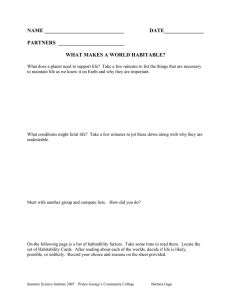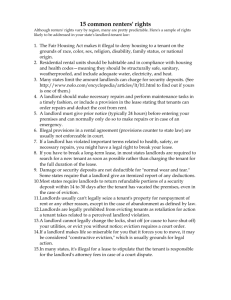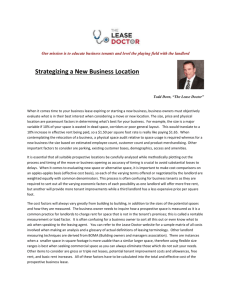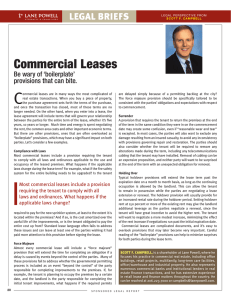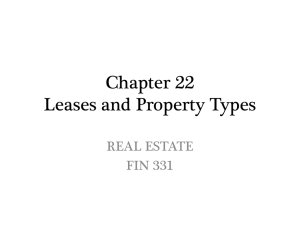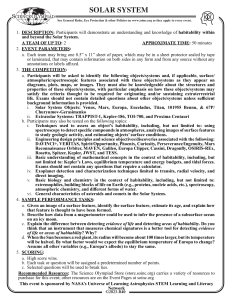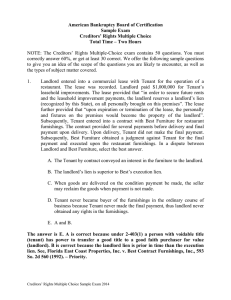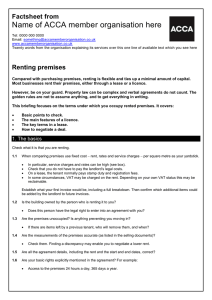Chapter 8: Real and Personal Property Answers to Select Case
advertisement
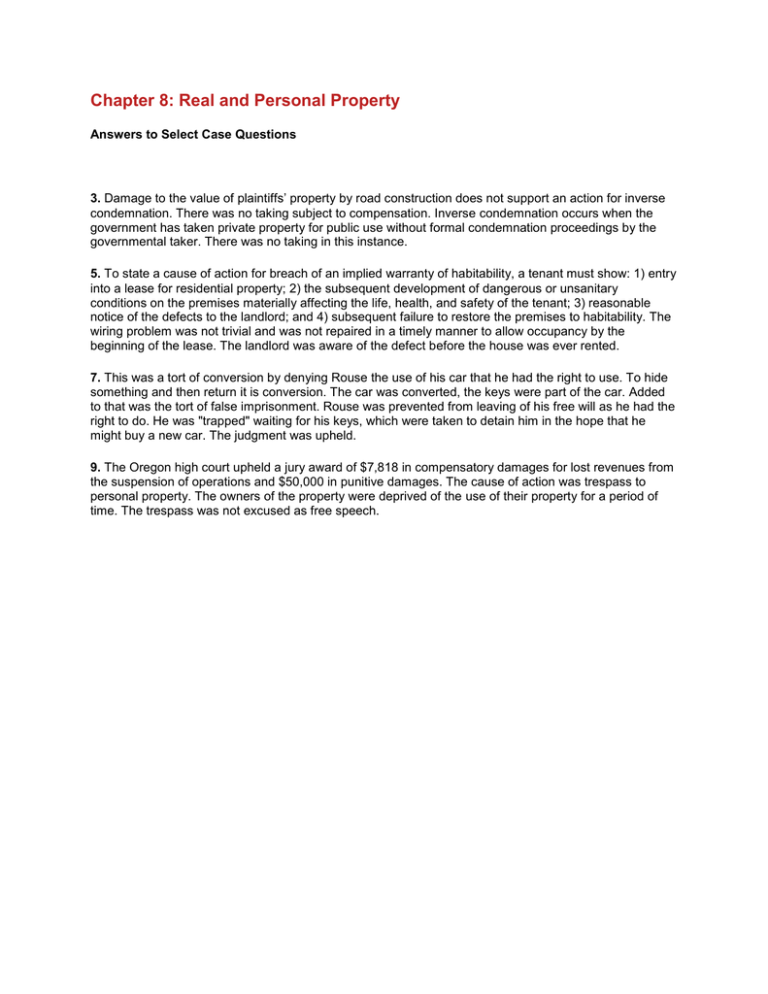
Chapter 8: Real and Personal Property Answers to Select Case Questions 3. Damage to the value of plaintiffs’ property by road construction does not support an action for inverse condemnation. There was no taking subject to compensation. Inverse condemnation occurs when the government has taken private property for public use without formal condemnation proceedings by the governmental taker. There was no taking in this instance. 5. To state a cause of action for breach of an implied warranty of habitability, a tenant must show: 1) entry into a lease for residential property; 2) the subsequent development of dangerous or unsanitary conditions on the premises materially affecting the life, health, and safety of the tenant; 3) reasonable notice of the defects to the landlord; and 4) subsequent failure to restore the premises to habitability. The wiring problem was not trivial and was not repaired in a timely manner to allow occupancy by the beginning of the lease. The landlord was aware of the defect before the house was ever rented. 7. This was a tort of conversion by denying Rouse the use of his car that he had the right to use. To hide something and then return it is conversion. The car was converted, the keys were part of the car. Added to that was the tort of false imprisonment. Rouse was prevented from leaving of his free will as he had the right to do. He was "trapped" waiting for his keys, which were taken to detain him in the hope that he might buy a new car. The judgment was upheld. 9. The Oregon high court upheld a jury award of $7,818 in compensatory damages for lost revenues from the suspension of operations and $50,000 in punitive damages. The cause of action was trespass to personal property. The owners of the property were deprived of the use of their property for a period of time. The trespass was not excused as free speech.

